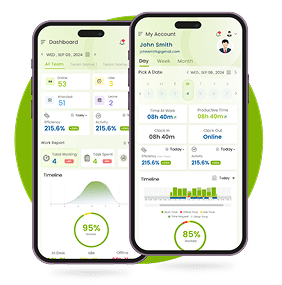Why Even the Smartest Teams Fail Without Clear Roles (And How to Fix It Before It Costs You)
“When everyone is responsible, no one is accountable.” – Patrick Lencioni
Do you ever feel like your team is constantly busy, yet not truly productive? Tasks get completed sort of. Meetings take place, but decisions remain unresolved. Your team may be filled with talented individuals, but somehow, performance doesn’t click the way it should. Clarity.
Consider this: in 1999, NASA lost a $125 million Mars orbiter because one team used imperial units while the other used metric. The mistake wasn’t technical, it was a failure of role clarity. Even the most brilliant teams can fall short without clearly defined responsibilities.
Clarity isn’t just about setting goals, it’s about knowing who is doing what, how, and why. Let’s explore how clearly defined roles and responsibilities can transform your team from good to great and help maximize employee performance.
The Hidden Costs of Role Confusion
The data tells a compelling story:
- Only 50% of employees strongly agree they know what’s expected of them at work (Gallup).
- Misaligned responsibilities are one of the top three reasons projects fail (Deloitte).
- Poor communication, including lack of role clarity, causes one-third of project failures (PMI).
These aren’t just inefficiencies, they translate to lost revenue, employee disengagement, and missed deadlines. When employees lack clarity, employee accountability weakens, and performance suffers.
The Role Clarity Framework: A Step-by-Step Guide
Here’s how to bring lasting clarity to your team and improve employee satisfaction:
Audit Your Current Structure
- Map out each team member’s current responsibilities
- Identify overlaps, gaps, and unclear duties
- Use tools like interviews, surveys, or time tracking data to gather insights.
Define Roles by Outcomes
- Shift focus from tasks to results
- Instead of “writes emails,” define the role as “increases lead conversion via email campaigns.”
- Include KPIs to measure employee productivity and impact.
Apply the RACI Matrix
- Responsible – Who is executing the task?
- Accountable – Who owns the outcome?
- Consulted – Who needs to give input?
- Informed – Who needs to be updated?
Document and Share
- Create digital role cards accessible to the whole team.
- Tools like Notion, Confluence, or Google Docs work well.
- Include purpose, key tasks, tools used, and reporting lines.
Revisit and Refine
- Roles should evolve with your business
- Review and update responsibilities quarterly or after major changes. This helps balance workload distribution effectively.
Common Mistakes to Avoid
-
❌
Assuming Clarity Exists:
Role understanding should be confirmed through conversation, not assumption.
-
❌
Confusing Titles with Roles:
Titles are static; roles should adapt to needs and goals.
-
❌
Ignoring Feedback:
Team members often know exactly where confusion lies, listen to them. This is crucial to preventing employee burnout and boosting team time management.
The Desklog Advantage: A Tool Built for Role Clarity
Technology can supercharge your efforts and that’s where Desklog comes in. Desklog is a automated time tracking and productivity tool designed to:
- ✅ Clearly assign and manage responsibilities
- ✅ Track task progress in real-time
- ✅ Visualize productivity trends by role
- ✅ Identify bottlenecks and overlaps
- ✅ Support performance reviews and rate of employee efficiency
With features like break & overtime notifications, Desklog also supports healthy work-life balance and reduces employee absenteeism in the workplace by monitoring real-time engagement and productivity trends.
With Desklog, turn every minute into impact, every role into purpose, and every task into measurable progress.
Conclusion
When roles are clear, guesswork disappears and ownership takes its place. Teams collaborate more, execute faster, and innovate with confidence. Role clarity isn’t just a management strategy, it’s a catalyst for transformation.
Audit your team, define clear roles, and implement the right tools to maintain transparency. Because high-performing teams don’t just work hard, they work clearly.
And when paired with effective
















